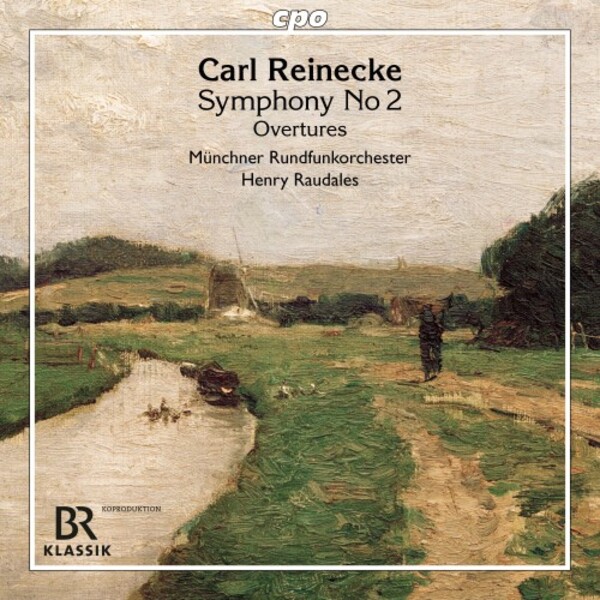REINECKE Symphony No 2. Overtures (Raudales)
View record and artist detailsRecord and Artist Details
Genre:
Orchestral
Label: CPO
Magazine Review Date: AW2024
Media Format: CD or Download
Media Runtime: 80
Mastering:
DDD
Catalogue Number: CPO555 115-2

Tracks:
| Composition | Artist Credit |
|---|---|
| Symphony No. 2 |
Carl (Heinrich Carsten) Reinecke, Composer
Henry Raudales, Conductor Munich Radio Orchestra |
| Jubelfeier, Movement: Overture |
Carl (Heinrich Carsten) Reinecke, Composer
Henry Raudales, Conductor Munich Radio Orchestra |
| Prologus solemnis |
Carl (Heinrich Carsten) Reinecke, Composer
Henry Raudales, Conductor Munich Radio Orchestra |
| Sommertagsbilder, Movement: Tanz unter der Dorflinde |
Carl (Heinrich Carsten) Reinecke, Composer
Henry Raudales, Conductor Munich Radio Orchestra |
| Dame Kobold, Movement: Overture |
Carl (Heinrich Carsten) Reinecke, Composer
Henry Raudales, Conductor Munich Radio Orchestra |
| Zenobia, Movement: Overture |
Carl (Heinrich Carsten) Reinecke, Composer
Henry Raudales, Conductor Munich Radio Orchestra |
Author: Andrew Farach-Colton
A student of Mendelssohn, Schumann and Liszt, Carl Reinecke (1824-1910) was a prominent fixture in Leipzig musical life for four decades. He served as director of the Gewandhaus Orchestra and taught piano and composition at that city’s conservatory, where his students included Albéniz, Grieg, Bruch, Janáček and Stanford. He was also, by his own admission, musically conservative, and even his later works – such as the Prologus solemnis of 1893, presented here – have little if anything in them that might raise Mendelssohn’s or Schumann’s eyebrows; indeed, many of Schumann’s works are significantly more adventurous.
Reinecke was a competent composer and sometimes a good deal more than that. Much of his Second Symphony of 1875 (inspired by Danish writer Adam Oehlenschläger’s tragic play of the same name) abounds with memorable melodies, from the Mendelssohnian opening (with its overt echoes of the Scottish Symphony) to its triumphal (and, again, Mendelssohnian) conclusion. Where Reinecke usually falls short is in his working out of these ideas. The first movement’s stormy development section sounds effortful, for example, and the finale eventually outstays its welcome. In fact, most of the pieces here feel overlong – Zur Jubelfeier (‘Jubilee Overture’) comes across rather like an academic exercise, and although the comic overture Dame Kobold has some fetching ideas and lovely delicate passages (try at 5'14", for example), it’s all spread too thin.
If you want to sample Reinecke at his best, start with the inner movements of the Symphony, then the slender Dance Under the Lime Tree. The Zenobia overture shows the composer could be grippingly dramatic – at times the sense of concentration is positively Beethovenian – although the tension eventually slackens.
Henry Raudales is as committed an advocate as one can imagine, eliciting passionate playing from his Munich orchestra, who outshine their Tasmanian colleagues on a Chandos disc (8/02) featuring the Second and Third Symphonies. And if you’re interested in out-of-the-way 19th-century repertoire, these overtures and shorter works are real rarities on record.
Discover the world's largest classical music catalogue with Presto Music.

Gramophone Digital Club
- Digital Edition
- Digital Archive
- Reviews Database
- Full website access
From £8.75 / month
Subscribe
Gramophone Full Club
- Print Edition
- Digital Edition
- Digital Archive
- Reviews Database
- Full website access
From £11.00 / month
Subscribe
If you are a library, university or other organisation that would be interested in an institutional subscription to Gramophone please click here for further information.




